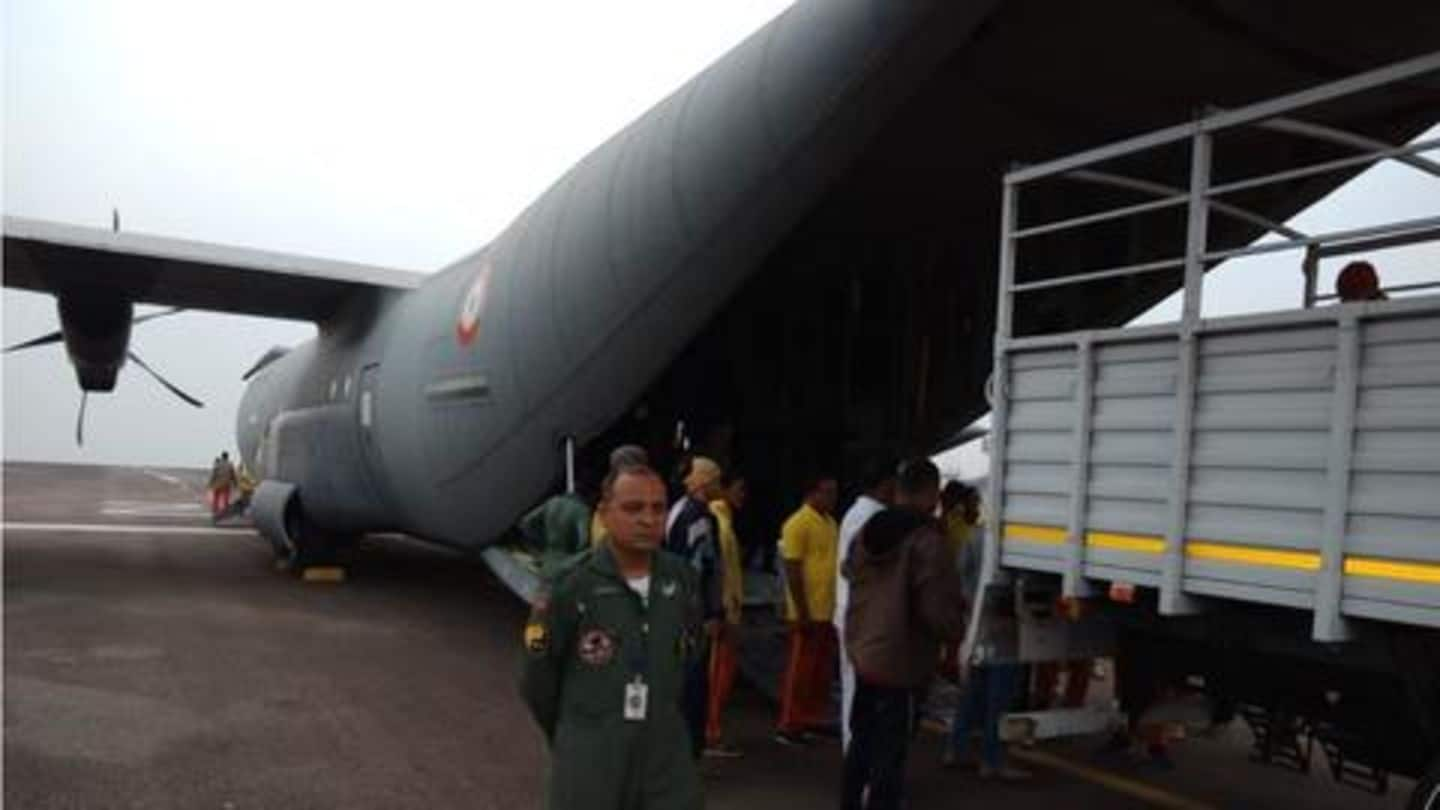
Meghalaya: Air Force transports heavy-duty pumps to rescue trapped miners
What's the story
A day after National Disaster Response Force (NDRF) personnel found a foul smell emanating from the rat hole coal-mine in Meghalaya where 15 miners are trapped, authorities have stepped up rescue efforts. On Friday, the Indian Air Force transported personnel and heavy-duty pumps to Guwahati in a bid to try and help NDRF pump water out of the flooded mine. Here are the details.
Trapped
Backstory: The miners have been trapped from December 13
The mine in question is located in Meghalaya's East Jaintia Hills district, near the Lytein river in Ksan village. Reportedly, the miners started work on the illegal mine on December 11, and got trapped on December 13 when water from the Lytein river gushed in and flooded the mine. It's believed that the miners accidentally breached an old, flooded mine, leading to the disaster.
Details
It took two weeks to get heavy-duty pumps
Despite repeated requests for heavy-duty pumps by the NDRF, it took two weeks for the requests to pass bureaucracy and reach Coal India, which has expertise in operating heavy pumps. Subsequently, the National Disaster Management Authority roped in the Indian Air Force to transport the Coal India pumps to the Guwahati airport. The pumps arrived on a C-130J Super Hercules plane on Friday.
Personnel
20 personnel from Odisha Fire Services have joined rescue efforts
Owing to the weight of the pumps, they cannot be airlifted from Guwahati airport via helicopter to site of the rescue. Instead, the pumps will be transported to the rescue site via road. Accompanying the pumps will be a team of 20 personnel from Odisha Fire Services, who have opted to join in on the rescue efforts.
Other details
Heavy-duty pump-makers Kirloskar Brothers are trying to find a solution
Meanwhile, two teams from heavy pump-makers Kirloskar Brothers are at the site of the rescue conducting a survey to find out if they can assist rescue efforts in any way. For those unaware, heavy-duty pumps made by Kirloskar Brothers were used in the rescue of a trapped junior football team from a flooded Thai cave in July.
Current situation
Unless water is pumped out, NDRF divers can't go in
In the mean time, NDRF personnel at the site of the disaster are waiting for the water level in the mine to drop to 40 feet from 70 feet, so that they can initiate diving operations to try and locate the miners. In the two weeks of rescue attempts, only three helmets have been found. There is no sign of the trapped miners yet.
Smell
The NDRF suspects that the miners might have died
On Wednesday, after nearly two weeks of rescue attempts, NDRF divers found a foul smell emanating from the 300-feet deep pit, sparking fears that the miners had died and that their bodies were decomposing. While the NDRF is hoping for a miracle, NDRF Assistant Commandant Santosh Singh, who is charge of the operation, has said that chances of the miners surviving are very slim.
Quote
Singh says there's practically little chance of a rescue
"Miracles do happen. As rescue personnel, we keep our hopes up till the last minute. But practically speaking, in this case, the chances of rescuing the men are very slim," said Singh.
Earlier
There have been similar incidents like this before
As unfortunate as it is, this isn't the first incident of this nature. In 2012, at least 15 people got trapped inside a similar 'rat hole' mine in the South Garo Hills, and their bodies were never found. Subsequently, in 2014, the National Green Tribunal (NGT) banned such mines owing to their unscientific nature, and risks involved. Evidently, the ban wasn't strictly enforced.